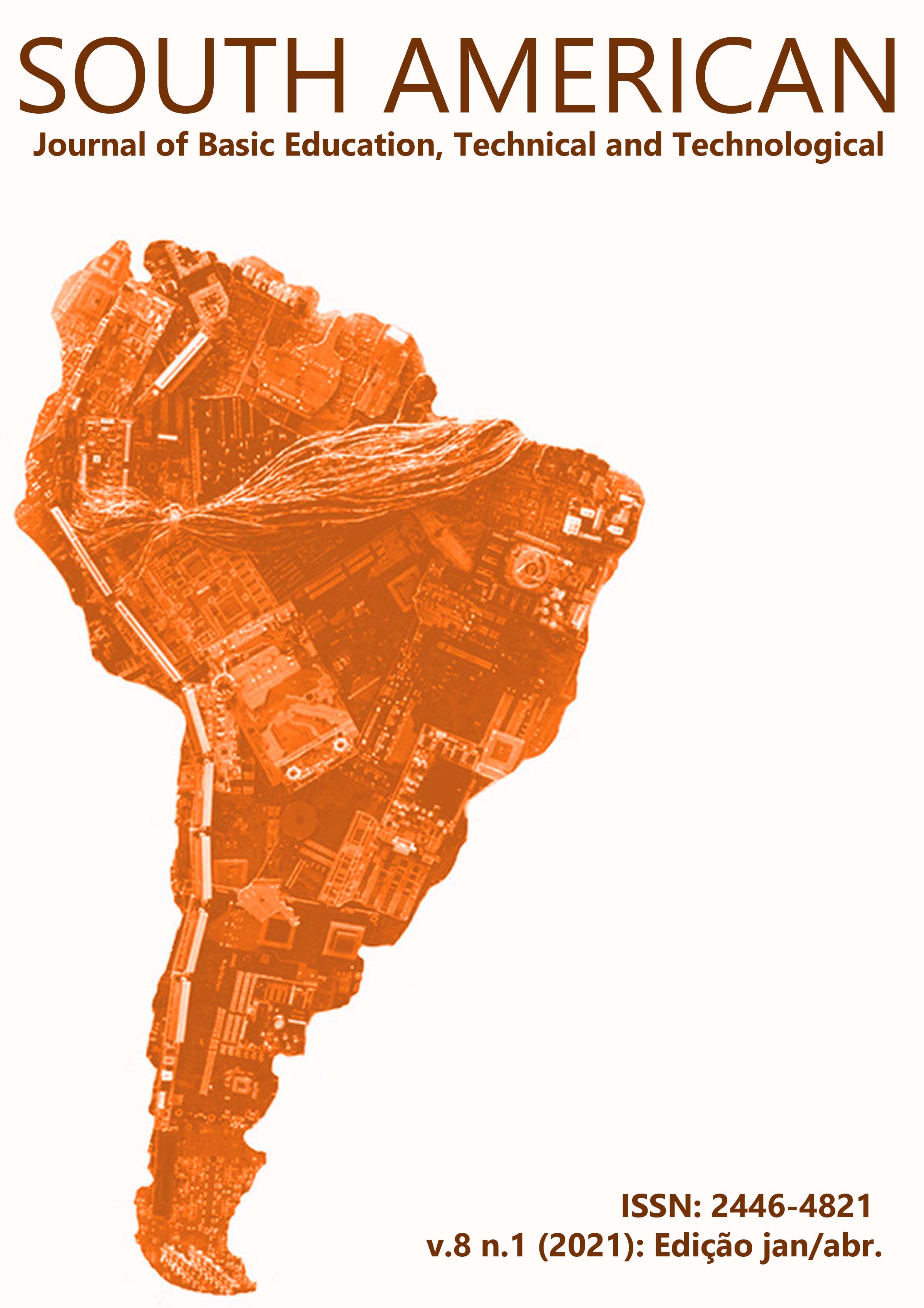The the specialized educational service for early children with indicatives of high skills/expertise in basic education in CEAM/AHS
Keywords:
High Skills Identification. Precocity. Special education.Abstract
The Specialized Educational Service - ESA for early students with indications of High Skills / Giftedness (AH / SD) offered by the State Center for Multidisciplinary Service for High Skills / Giftedness (CEAM / AHS) in Campo Grande - MS, has the purpose identify and promote ESA for early children with HA / SD behaviors and carry out formal assessment for HA / SD. With the increase in the demand for care and assessment of early children, who have been presenting AH / SD indications, forwarded to the AEE, CEAM / AHS identified the need for the restructuring of the AEE and formal assessment, based on a pedagogical structure, with the aim of basing the philosophical principles of inclusive education with the objective of developing potential while recognizing the precocious as a child who has his own peculiarities and needs of childhood. This report is based on sources obtained through the collection of data verified in practice regarding the data of the precocious in the CEAM / AHS, having as support the legislation and texts of authors such as Chacon, Martins, Renzulli, Gardner, among others.
Downloads
References
[2] CLINE, S.; SCHWARTZ, D. (1999). Diverse populations of gifted children. Upper Saddle River, NJ: Merrill. Apud Saberes e Práticas da Inclusão. Brasília, 2006
FACHIN, O. Fundamentos de Metodologia. 3. ed. São Paulo: Saraiva, 2001.
[3] MARTINS, B. A.; CHACON, M. C. M. Alunos precoces no Ensino Fundamental I:quem são essas crianças? Revista Educação Especial Santa Maria –RS. v. 29. n. 54.p. 233-246. jan./abr. 2016, p. 234, 235. Disponível em <https://periodicos.ufsm.br/educacaoespecial/article/view/13710/pdf > Acesso em: out. 2020.
[4] BARBOSA, M. C. S. Culturas escolares, culturas de infância e culturas familiares: as socializações e a escolarização no entretecer destas culturas. Educação e Sociedade, Campinas, v. 28, n. 100, Ed. Especial, out. 2007, p. 1066.
[5] RENZULLI, J. S.; REIS, S. M. The Three-ring conception of giftedness. Connecticut: NEAG – Center for Gifted Education and Talent Development, Storrs, 1997.
[6] GARDNER, H. Inteligências múltiplas: a teoria na prática. Porto Alegre: Artes Médicas,1995.
[7] RENZULLI, J. S. O que é esta coisa chamada superdotação, e como a desenvolvemos? Uma retrospectiva de vinte e cinco anos. Educação. Porto Alegre – RS, ano XXVII, n. 1, p. 75 - 121, jan/abr. 2004, p.21.
[8] PÉREZ, S. P. B. A Identificação das altas habilidades sob uma perspectiva multidimensional. Revista Educação Especial v. 22, n. 35, p. 299-328, set./dez. 2009, Santa Maria Disponível em: < http://www.ufsm.br/revistaeducacaoespecial> Acesso em: abr. 2019.
[9] ALENCAR, E. M. L. S.; FLEITH, D. S. Superdotados: determinantes, educação e ajustamento. 2. Ed. Rev. Amp. São Paulo: EPU, 2001, p. 135.
[10] RENZULLI. Three-Ring Conception of Giftedness. In: BAUM, S. M.; REIS, S. M.; & MAXFIELD, L. R. (Eds.). Nurturing the gifts and talents of primary grade students. Mansfield Center, CT: Creative Learning Press, 1998.
[11] BRASIL. Ministério da Educação. Secretaria de Educação Especial. Diretrizes nacionais para a educação especial na educação básica. Brasília, DF, 2001, p. 49.
[12] SOARES, N. F.; SARMENTO, M. J.; TOMÁS, C. Investigação da infância e crianças como investigadoras: metodologias participativas dos mundos sociais das crianças. Nuances: estudos sobre Educação, ano XI, v.12, n.13, p. 49-64, jan /dez. 2005, p. 60. Disponível em: <http://revista.fct.unesp.br/index.php/Nuances/article/viewFile/1678/1593>. Acesso em: out. 2020.
[13] BRASIL. Ministério da Educação. Secretaria de Educação Especial. Política Nacional de Educação Especial na Perspectiva Inclusiva. Brasília: MEC/SEESP, 2008.
[14] BRASIL. Ministério da Educação. Secretaria de Educação Especial. Diretrizes Operacionais da Educação Especial para o Atendimento Educacional Especializado na Educação Básica. Brasília: MEC/SEESP, 2009.
[14] BRASIL. Decreto nº 6571 de 17 de setembro de 2008. Brasília: Jus Brasil. 2008b. Disponível em http://www.jusbrasil.com.br. Acesso em: 18 set 2020
[15] BRASIL.. Decreto nº 7.611, de 17 de novembro de 2011. Dispõe sobre a educação especial, o atendimento educacional especializado e dá outras providências. Diário Oficial da União, Brasília, DF, 18 nov. 2011. Disponível em: <http://www.planalto.gov.br/ccivil_03/_ato2011-2014/2011/decreto/d7611.htm>
Acesso em: 12 set. 2020.
[16] BRASIL. Ministério da Educação. Conceitos de AltasHabilidades/Superdotação. Brasília, 2007. Disponível em:
<http://portal.mec.gov.br/seesp/index.php?option=com_content&task=view&id=134 >. Acesso em: 12 set. 2020.
[17] MALAGUZZI, L. Ao contrário, as cem existem. In: EDWARDS, C.; GANDINI, L.; GEORGE, F. As cem linguagens da criança. São Paulo: Artmed, 1999.
[18] MOREIRA, M. A. O que é afinal aprendizagem significativa? Revista cultural La Laguna Espanha, 2012. Disponível em: http://moreira.if.ufrgs.br/oqueeafinal.pdf. Acesso em: 22/10/2020, p. 2.










